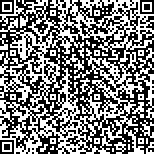下载中心
优秀审稿专家
优秀论文
相关链接
摘要

本文利用Wu等人提出的遥感数据时空融合方法STDFA(Spatial Temporal Data Fusion Approach)以Landsat 8和MODIS为数据源构建高时间、空间分辨率的遥感影像数据.以此为基础,构建15种30 m分辨率分类数据集,然后利用支持向量机SVM(Support Vector Machine)进行秋粮作物识别,验证不同维度分类数据集进行秋粮作物识别的适用性.实验结果显示,不同分类数据集的秋粮作物分类结果均达到了较高的识别精度.综合各项精度指标分析,Red+Phenology数据组合对秋粮识别效果最好,水稻识别的制图精度和用户精度分别达到91.76%和82.49%,玉米识别的制图精度和用户精度分别达到85.80%和74.97%,水稻和玉米识别的总体精度达到86.90%.
Mapping autumn crop distribution via remote sensing is influenced by the same growth period of crops. Identifying autumn crops using low temporal resolution or low spatial resolution remote sensing data is difficult because the spectral signatures of different crops are similar. An effective approach is the use of remote sensing data with high temporal-spatial resolution in solving the problem of "foreign bodies with spectrum," which lowers the accuracy of autumn crop distribution mapping. In this study, the Spatial Temporal Data Fusion Approach (STDFA) is employed to generate remote sensing data with high temporal-spatial resolution, namely, Red, NIR, and NDVI. The Red and NIR data are smoothened using the TIMESAT program. Meanwhile, the phenology indices from the time-series NDVI data are calculated by the filtered Red and NIR data. The four data types, namely, Red, NIR, NDVI, and phenology indices, are used to construct fifteen kinds of 30 m resolution simulated remotely sensed data for the identification of autumn crops. The applicability of the different dimensions of the data in autumn crop identification is then verified using a support vector machine. The test data are derived from the visual interpretation of the results of unmanned aerial images.A high mapping accuracy is achieved with the autumn crop classification results from the different data sets. The crop classification results of the generated remote sensing image data and the corresponding bands of Landsat 8 and MODIS are compared. The analysis of precision and crop spatial distribution reveals that the Red+phenology data set effectively identifies autumn crops in terms of spatial position and distribution details. The data set achieves accuracies of 91.76% and 82.49% for paddy producers and users, respectively, and 85.80% and 74.97% for corn produces and users, respectively. The overall accuracy achieved for both paddy and corn reaches 86.90%. The Red, NIR, NDVI, and phenology data sets generated by the STDFA can effectively distinguish the type of autumn crops. The increase in the dimension of high spatial-temporal data and the accuracy of classification are not positively correlated, with the former showing a slight correlation with stability to some extent. Compared with the classification results of the MODIS data, the remote sensing images with high spatial-temporal resolution show higher classification precision and better crop spatial distribution. The findings of the study can therefore serve as preliminary experimental basis for utilizing remote sensing images with high spatial-temporal resolution in the identification of autumn crops.

